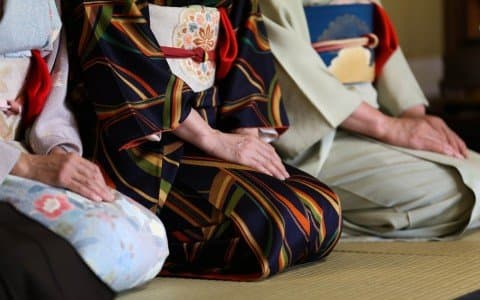Essentials & Advice
Asia-Pacific
Published on June 14, 2013
What You Need to Know About Japanese Etiquette
By Orsolya Kako
![]()
 We’ve all been there. It’s your first time in a new country and you know little, if anything, about the people, their culture or their customs. Bow or shake? Shoes on or off? Smile or frown? (Just kidding—always smile.)
We’ve all been there. It’s your first time in a new country and you know little, if anything, about the people, their culture or their customs. Bow or shake? Shoes on or off? Smile or frown? (Just kidding—always smile.)
Consider this your cheat sheet to mastering Japanese etiquette and culture.

The Japanese Bow
The bow is the handshake of Japan. However, unlike a handshake, where eye contact is important, a well-delivered bow leaves you inspecting your shoes. Practice makes perfect: stand with your back to the wall and bend from the hips, keeping your backside in contact with the wall.
Language and Speech
Hai means yes, but in Japanese it is also used as conversation filler, such as “I see,” or “hmm.” As a result, Japanese speakers of English often say “yes,” giving the impression they understand or agree, when perhaps they don’t.
Additionally, the Japanese rarely raise their voices unless they’re singing karaoke. If you have a problem or complaint, it is best to discuss it in a calm voice using carefully chosen words.
Shoes
Shoes are constantly being put on and taken off in Japan.
 It is polite to arrange your shoes side-by-side, toes facing out so you can step into them as you leave. The general rule is that any place you must step up onto is a shoe-free territory. Shoes are not worn in rooms with tatami (woven mats). Slippers are not worn on tatami either, except at some historic sites.
It is polite to arrange your shoes side-by-side, toes facing out so you can step into them as you leave. The general rule is that any place you must step up onto is a shoe-free territory. Shoes are not worn in rooms with tatami (woven mats). Slippers are not worn on tatami either, except at some historic sites.
And remember: bathroom slippers are only worn in the bathroom.

Decor and Space
Paper sliding doors are used to divide tatami rooms, and the paper is easy to rip, but hard to fix. Do yourself a favour: be careful! You should also be aware that traditional hotel rooms have an alcove in the wall for a scroll and flower arrangement. Do not leave luggage or items in this nook.
Sake
As wine is to Italy and scotch is to Scotland, sake is to Japan. But as with many elements of Japanese culture, there is a longstanding tradition associated with how it’s served. Check out this great YouTube clip for a primer on how to properly serve and drink sake.

